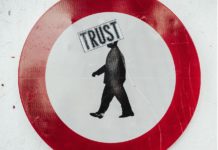A sales master will know that questions, when they are meaningful, relevant, open, intelligent, astute, are the foundation to knowing your customer.
Without knowing the questions – it is difficult to know how you are going to help them.
Before you do any of these steps, you must have this foundation to start:
- You need to be sold on what you are selling. You need to know the value to the client.
- You are practiced in each step so that its natural. You are being your authentic self.
There are two different stages of questions.
Stage 1: Qualifying Questions
The time for qualifying questions is when you are calling out/prospecting and you are determining if they are in the market for your offer.
- You’ve done enough homework to identify this client may well need your solution.
- Your intention is to show 1) you are out to help them and 2) when they are ready to be helped, you are the ‘go to’ person – the trusted advisor.
- You understand you will need to frame why you are calling. They were not expecting you, they don’t know you, the problem must not be on their mind right now.
- You have a clear, precise elevator pitch which explains what your solution does.
- You are calm, reasonable and rational. You are speaking clearly and at the right pace.
- Your question pool is large. You will draw in the most relevant questions at the time along the lines of these types of ‘other clients have found/statement & solution’ questions:
- Many of our clients are reporting problems with areas A, B, and C. How are these areas affecting you? What do you think about them?
- Some people are doing … as that’s the easiest or the way they know best. Have you considered another solution?
- Sometimes we find other people in your industry may be having problems with [insert a couple of pain points]. Is this the case with you or your company?
- How is your current solution working out, on a scale of 1-10? (10 being perfect, 1 being ‘it’s not working out’.) Ensure you are having two-way conversations by this point.
- What concerns do you have about switching/implementing a new solution?
- If you would like other ideas, solutions on how to improve – reduce costs, create time, make money, be efficient – I’m here and happy to assist. I’ve been working in this area for X years and know all the different options available to you to make your life easier.
- What are your thoughts on what needs to happen to improve/make progress/change?
- You realise they may not be ready with the answers, have patience. Don’t answer your own questions or give multiply choice!
- You are 100% present – you’re able to listen carefully to everything they are saying.
- You take detailed notes.
- The flow naturally moves to the next stage (channel two) which may progress then or further down the line – this is the exploration stage.
- You are not quick to take a no. If they do actually need what you have but the timing is out – then the timing is out. Ensure you leave the conversation positive with something like: ‘If it’s not right for you right now, I’m happy to send over my email and a top line of how we can help. And then when you are ready to tackle that we can reconnect.’
- Don’t take things personally. 99% of outbound prospecting is all about timing. Smile, breathe, be grateful for the opportunity to serve more people and get on the phone to the next person you might be able to help.
Stage 2: Exploration Questions
This is when you are certain they are in the market for what you have. You may have had some previous engagement and they are aware of you and know that they want a solution to a problem.
- You’ve identified they appear to fit your ideal client profile.
- Your intention is to a) help them and b) be seen as the trusted advisor and solution provider.
- You are calm, reasonable and rational. Speaking clearly and going at the pace of the client.
- Ask open ended, investigating, specific and clarify questions. These questions allow you to delve deeper with that prospect, ascertaining everything about their needs, wants, desires, beliefs etc so you can see how your solution can serve them. The questions will likely include:
- Walk me through: how you are currently doing xyz, or explain how this works…
- How: How long have you had the problem? How have you gone about fixing it? How does your team feel about …? How does X feel about the issue? …
- What: What do you think the solution is? What do you know about the different solutions available? What is your timing? What happened when you tried X? What are you looking for? What does success look like?
- When: When did it start? When did that happen? When did X do that? When this took place what was the result? When are you looking to get it solved or started?
- If: If this was to be a solution what would that mean? If you were to allow yourself to run a ‘best case’ scenario (regardless of any restrictions like money, time, effort etc) what would that be? Why would you say that? How close are you to that now? If you were to fast-forward to 18 months from now, what will you be doing differently?
- Closed questions:
- Have: Have you tried anything before/Have you considered…?
- Which: do you prefer X or Y, and ‘why’
- Did: you enjoy zyx
- Do: you prefer x or z
- You are 100% present – you’re totally engrossed in what they are talking about. You are aware of what they are saying, doing, getting excited or concerned about. You are noting their language, their beliefs, their knowledge on the problem and its fixes, the urgency, timing, key decision makers, what they think will fix it.
- You understand they will be doing most of the talking.
- You take detailed notes.
- The flow naturally moves to the next stage which is further exploration, meeting further individuals in that business and the sale.
Questions are the key. If there is one area we ask leaders to train their team on its all about seek to understand. This means have a pool of many questions so you can keep that client discussing the situation—so you know how you can best serve them.


































